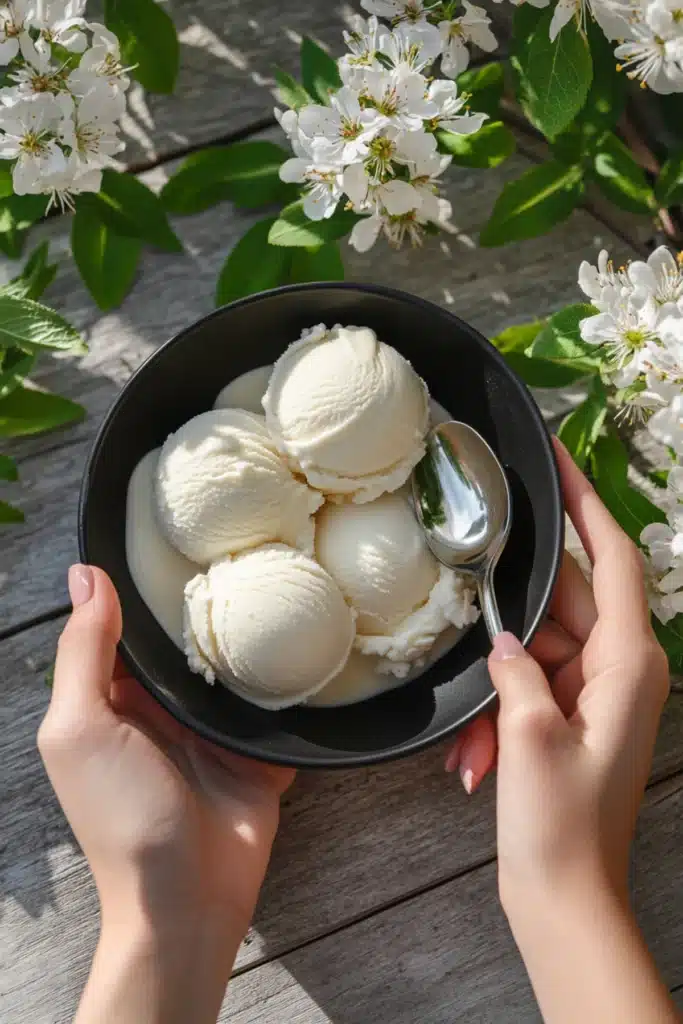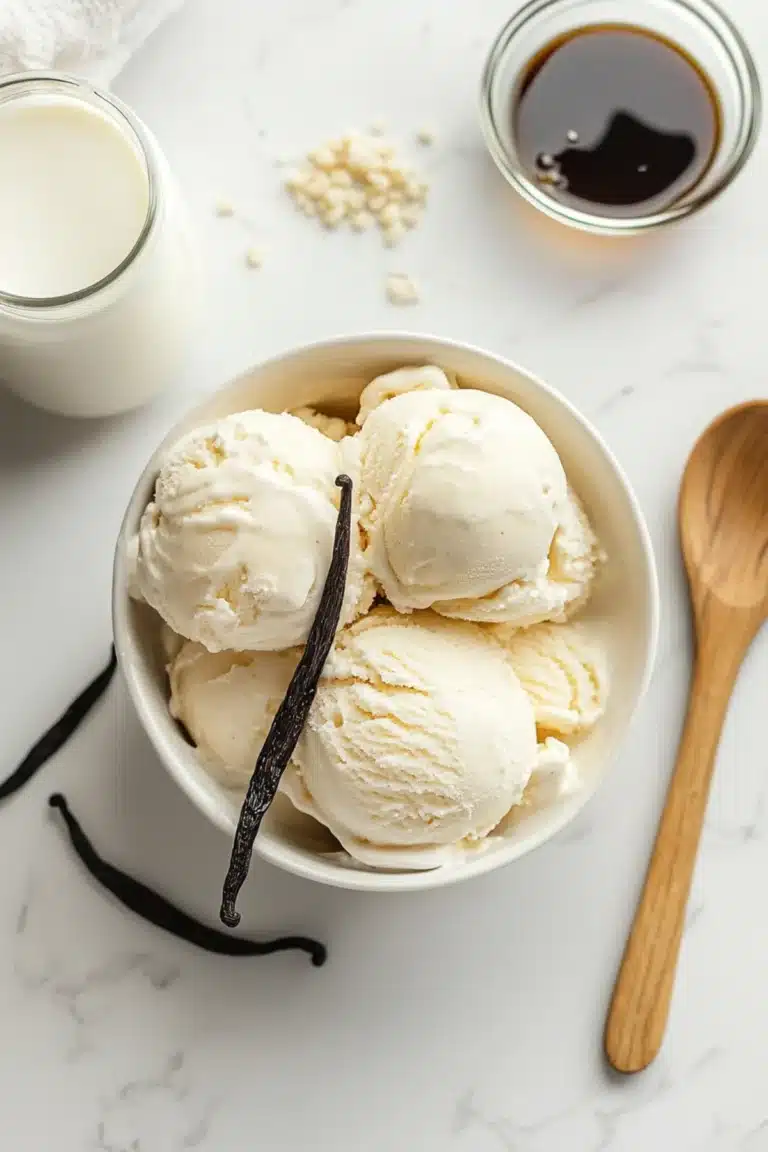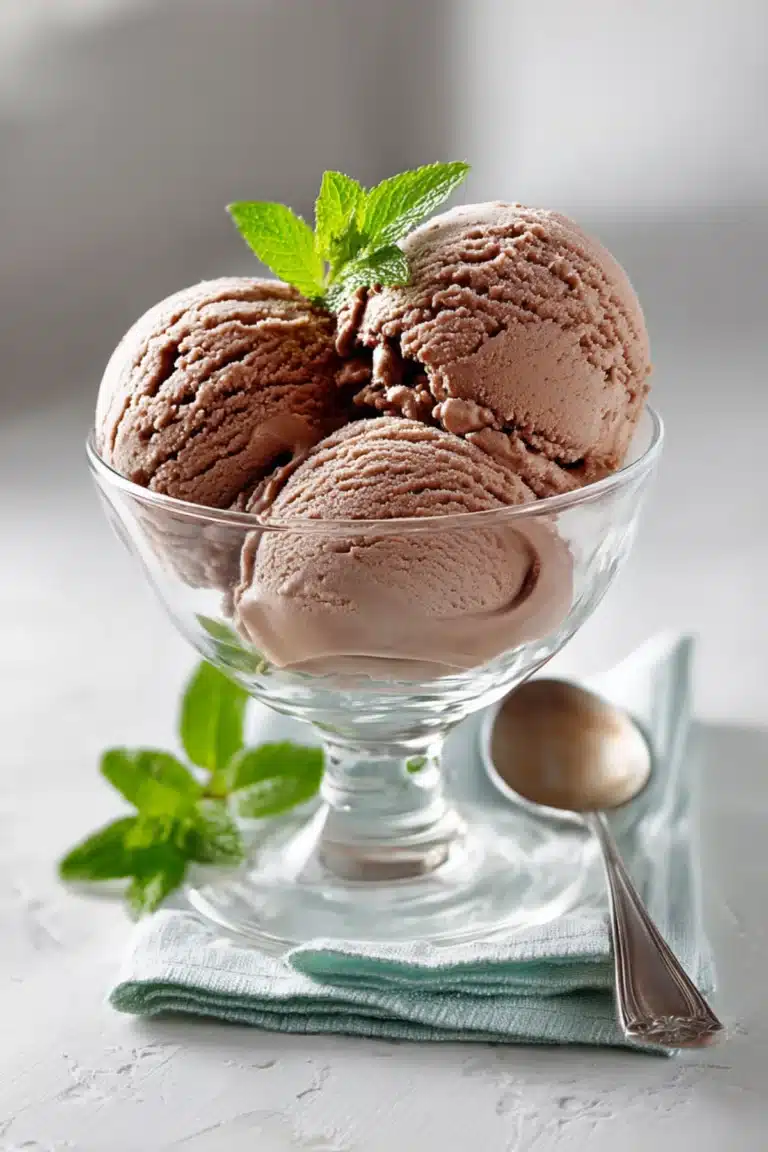Pinon Ice Cream
A Creamy Memory That Melts in My Heart
I still remember it like yesterday. I was 9, barefoot in my grandma’s kitchen in northern New Mexico, and the scent of toasted pine nuts danced in the warm air.
“You ever tasted piñon ice cream, mija?” she asked, scooping a rich, nutty blend into a bowl. It was smooth, earthy, a little sweet—completely different from anything I’d ever had. Now, every summer, I recreate that childhood magic with this nostalgic and delicious pinon ice cream recipe.
Discover more unique and delicious frozen recipes in our full Ice Cream category — your next scoop awaits!
Whether you’re a lifelong fan of this Southwestern classic or trying it for the first time, this guide will take you through every step—from toasting pine nuts to churning creamy perfection at home. Let’s dive into the flavors, health tips, and fascinating facts behind this unique dessert!
What Is Pinon Ice Cream?
Understanding the Origin of Piñon Ice Cream
Pinon ice cream is a rich, creamy dessert made from traditional custard ice cream infused with toasted pine nuts, locally known as “piñon” in the Southwest. It’s a regional specialty especially loved in New Mexico, where piñon trees are native.
Unlike typical nutty ice creams, pinon brings an earthy, buttery note that’s both exotic and comforting.
Piñon vs. Pine Nut: What’s the Difference?
While the terms are often used interchangeably, piñon refers specifically to pine nuts harvested from piñon trees (like Pinus edulis), which are native to the American Southwest.
These are different from imported pine nuts that often come from Asian or European species.
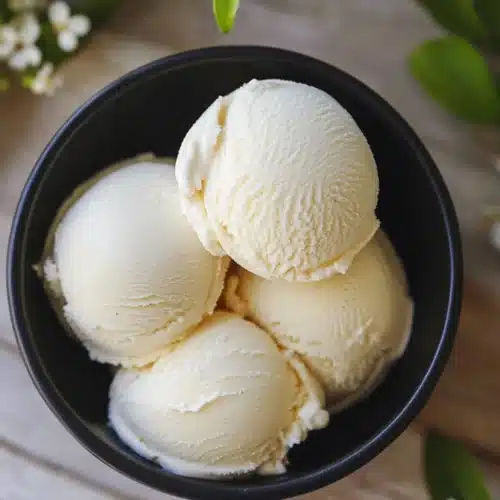
Pinon Ice Cream Recipe
Ingredients
- 1 cup whole milk
- 2 cups heavy cream
- 3/4 cup granulated sugar
- 4 egg yolks
- 1/2 teaspoon vanilla extract
- 1/2 cup pine nuts toasted and chopped
Instructions
Toast the Pine Nuts:
- In a dry skillet over medium heat, toast pine nuts until golden and aromatic. Let them cool and chop coarsely.
Heat the Milk and Sugar:
- In a medium saucepan, combine whole milk and sugar. Warm gently, stirring until the sugar dissolves. Don’t boil.
Temper the Egg Yolks:
- Whisk egg yolks in a separate bowl. Gradually add a bit of the warm milk mixture while whisking constantly to avoid cooking the yolks.
Combine and Thicken:
- Return the tempered yolk mixture to the saucepan. Stir constantly over low heat until thickened—about 5–7 minutes. The mixture should coat the back of a spoon.
Add Cream and Vanilla:
- Remove from heat. Stir in the heavy cream and vanilla extract. Let cool to room temperature, then refrigerate for at least 4 hours.
Churn the Ice Cream:
- Pour chilled mixture into an ice cream maker. Churn as per manufacturer’s instructions. In the last 2–3 minutes of churning, add the chopped, toasted pine nuts.
Freeze and Serve:
- Transfer to an airtight container and freeze for at least 4 hours. Scoop and enjoy the rich, nutty magic of pinon ice cream!
Notes
| Nutrient | Amount |
|---|---|
| Calories | 315 kcal |
| Total Fat | 23g |
| Saturated Fat | 12g |
| Cholesterol | 175mg |
| Sodium | 40mg |
| Total Carbs | 21g |
| Sugars | 17g |
| Protein | 5g |
| Fiber | 1g |
| Vitamin E | 12% DV |
| Magnesium | 8% DV |
For a lighter, naturally sweet dessert, try our creamy Goat Milk Ice Cream — it’s refreshing and smooth.
Homemade Pinon Ice Cream Recipe – Step by Step Guide
Gather Your Creamy & Nutty Ingredients
Making authentic pinon ice cream at home doesn’t require fancy equipment or hard-to-find items. Here’s everything you’ll need to bring this nostalgic dessert to life:
| Ingredient | Amount |
|---|---|
| Whole milk | 1 cup |
| Heavy cream | 2 cups |
| Granulated sugar | 3/4 cup |
| Vanilla extract | 1/2 teaspoon |
| Egg yolks | 4 |
| Pine nuts (toasted and chopped) | 1/2 cup |
These ingredients create a rich, custard-based pinon ice cream that’s both creamy and packed with earthy nutty goodness.
FOR MORE RECIPES FOLLOW ME ON PINTEREST
Toast the Pine Nuts for Bold Flavor
Toasting pine nuts is a crucial step. Here’s how to get it just right:
- Place the pine nuts in a dry skillet over medium heat.
- Stir constantly for about 3–5 minutes until golden and fragrant.
- Let them cool, then chop them coarsely. Toasted nuts unlock a deep, aromatic profile—essential to any quality pinon ice cream.
Heat the Milk and Dissolve the Sugar
- In a medium saucepan, combine 1 cup whole milk with ¾ cup sugar.
- Heat gently, stirring until the sugar dissolves completely.
- Be careful not to boil—this stage should be warm and smooth.
Temper the Egg Yolks
- In a bowl, whisk four egg yolks until silky.
- Slowly add a bit of the warm milk mixture into the yolks, whisking constantly.
- This tempering step prevents the eggs from scrambling and keeps your pinon ice cream base creamy.
Combine and Thicken the Custard
- Pour the egg mixture back into the pan with the rest of the milk.
- Stir on low heat for 5–7 minutes until the mixture thickens.
- It should coat the back of a spoon when ready.
Finish with Cream & Vanilla
- Remove from heat.
- Stir in 2 cups heavy cream and ½ teaspoon vanilla extract.
- Let cool to room temperature, then refrigerate for at least 4 hours (or overnight for best results).
Churn the Ice Cream
Once chilled, pour the mixture into your ice cream maker and churn based on the manufacturer’s instructions. In the final minutes, add your toasted chopped pine nuts. This step binds the rich custard and nutty textures into a signature pinon ice cream experience.
Freeze and Enjoy
- Transfer to an airtight container.
- Freeze for at least 4 hours or until firm.
- Scoop generously and savor your homemade pinon ice cream with pride!
What Does Pinon Ice Cream Taste Like?
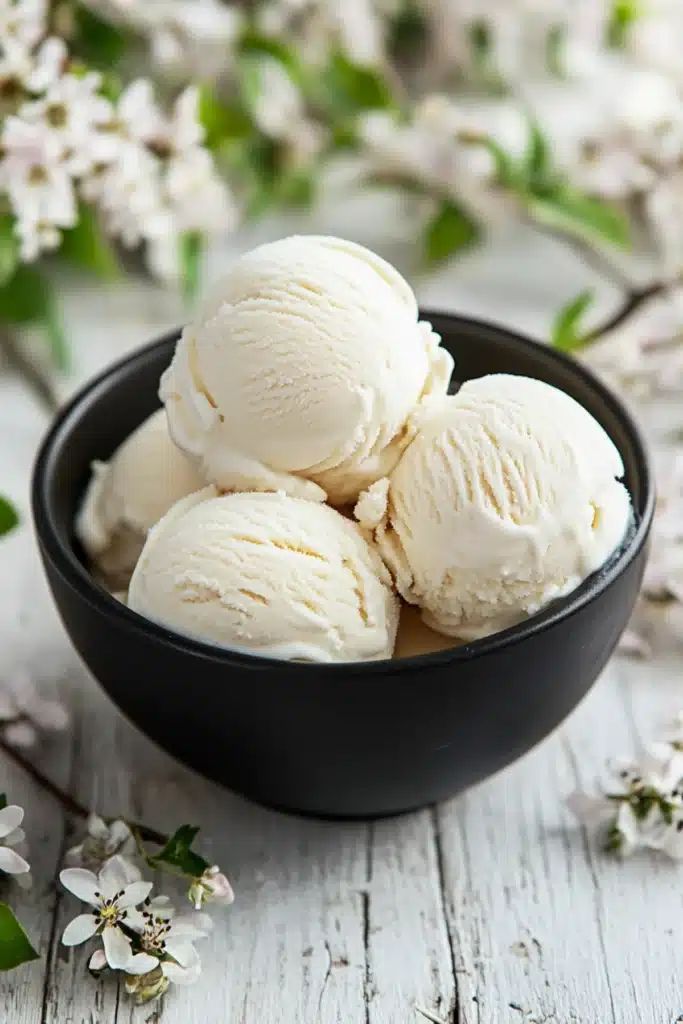
Craving rich, bold flavors? The Black Walnut Ice Cream delivers deep nuttiness with every bite.
Nutty, Earthy, and Irresistibly Creamy
Pinon ice cream offers a truly one-of-a-kind taste. The flavor is nutty but not overpowering—imagine a buttery cashew mixed with a hint of roasted almond, all wrapped in rich cream. The toasted pine nuts bring a subtle smokiness and an earthy aroma that lingers gently on your palate. It’s a balance of creamy sweetness and rustic charm that you simply can’t get from store-bought flavors.
Texture: Smooth with Crunchy Surprises
Unlike traditional vanilla or chocolate ice cream, pinon ice cream has layers of texture. The silky custard base is luxuriously smooth, while the chopped toasted pine nuts add tiny bursts of crunch. Every spoonful keeps your taste buds guessing—rich cream followed by that irresistible nutty bite.
A Southwest Signature in Every Bite
This isn’t just dessert; it’s a cultural experience. Pinon ice cream reflects the spirit of the American Southwest. If you’ve ever hiked through piñon-juniper forests in New Mexico or tasted roasted piñon at a local market, this ice cream brings those memories alive. It’s sweet nostalgia mixed with culinary elegance.
Why People Fall in Love with Pinon Ice Cream
Many first-timers describe the flavor as comforting and addictive. It’s not cloyingly sweet like other flavors; instead, it’s deep, warm, and soulful. Some even say it feels like a hug in a bowl.
“It tastes like home,” one fan said. “Even though I’m not from the Southwest, it feels like I belong there.”
Health Benefits and Nutritional Facts of Pinon Ice Cream
Is Pinon Ice Cream Good for You?
While pinon ice cream is undeniably an indulgent treat, it offers more than just flavor. Thanks to the pine nuts, it carries certain health perks that most traditional desserts can’t claim.
Pine nuts are rich in healthy fats, magnesium, and vitamin E, which are essential for heart health and cognitive function. According to Healthline, they’re also high in antioxidants and may support weight management when consumed in moderation.
Key Nutritional Highlights (Per Serving Estimate)
| Nutrient | Approx. Value |
|---|---|
| Calories | 280–320 |
| Total Fat | 23g |
| Saturated Fat | 12g |
| Protein | 5g |
| Carbohydrates | 20g |
| Fiber | 1g |
| Sugars | 17g |
While pinon ice cream is high in fat and sugar (as most ice creams are), the presence of nuts adds a layer of nutritional density. These fats are primarily monounsaturated, the kind linked to better heart health.
Why You Shouldn’t Overdo It
Moderation is key. Pine nuts are calorie-dense, and in rare cases, some people experience “pine mouth,” a temporary bitter or metallic taste that can last a few days after consumption. This condition is linked to certain non-edible pine nut species—Wikipedia explains this in detail. To avoid it, always choose fresh, high-quality pine nuts.
Lactose, Eggs, and Sugar Considerations
If you’re lactose-intolerant or watching your sugar intake, classic pinon ice cream may not suit your diet. However, it can easily be adapted using almond milk or coconut cream and natural sweeteners like monk fruit or agave.
Allergy Alert: Tree Nuts
Since pinon ice cream contains pine nuts, those with tree nut allergies should avoid it. Always label your homemade batches clearly when serving others.
How to Make Dairy-Free or Vegan Pinon Ice Cream
Vegan Ingredients That Still Bring the Creaminess
Craving pinon ice cream but avoiding dairy or eggs? Don’t worry—you can still enjoy that rich, nutty flavor. The trick is choosing the right plant-based alternatives that mimic the smooth texture of traditional ice cream.
Here’s a quick substitution guide for a vegan version:
| Original Ingredient | Vegan Substitute |
|---|---|
| Whole milk | Unsweetened almond milk |
| Heavy cream | Full-fat coconut milk |
| Egg yolks | Cornstarch or agar-agar |
| Granulated sugar | Coconut sugar or agave syrup |
| Vanilla extract | Same |
| Pine nuts | Same (ensure no cross-contamination) |
Coconut Milk for Richness
Full-fat coconut milk offers the creamy base needed for a decadent vegan pinon ice cream. When paired with almond or cashew milk, you get balance: thick and luscious, yet mild in taste.
Cornstarch Instead of Egg Yolks
To thicken your vegan custard base, use cornstarch. Mix 2 tablespoons of cornstarch with cold almond milk and add it to the warm milk mixture. This will give your vegan ice cream a smooth, scoopable texture without eggs.
Sweeten Naturally
Agave syrup or maple syrup pairs beautifully with the earthy flavor of pine nuts. Coconut sugar also works well and gives a deeper caramel-like tone.
Churn as Usual
Once you’ve blended your vegan base and cooled it, pour it into your ice cream maker. Add the toasted pine nuts during the last few minutes of churning to preserve their crunch.
Pro tip: Let your vegan pinon ice cream sit out for 5 minutes after freezing to soften before scooping—it’ll be creamier and easier to serve.
Love texture in your scoops? Our Tin Roof Sundae Ice Cream mixes creamy, crunchy, and chocolatey layers perfectly.
Bonus: Gluten-Free and Paleo Friendly
With just a few tweaks, your vegan pinon ice cream can also be gluten-free and paleo-approved. Just make sure your sweeteners and add-ins align with your dietary goals.
The History and Cultural Roots of Pinon Ice Cream
A Flavor Born from the American Southwest
Pinon ice cream isn’t just a dessert—it’s a legacy. The foundation of this flavor lies in the arid landscapes of New Mexico, Arizona, and parts of Colorado and Utah, where piñon pines have been growing for centuries. For Indigenous communities and early Spanish settlers, the piñon nut wasn’t just food—it was sacred. Harvested in the fall and often roasted over open fires, these tiny nuts became a staple of both survival and ceremony.
Today, using pine nuts in sweet treats like ice cream is a modern spin on ancient traditions, blending old-world respect with new-age culinary creativity.
The Role of Piñon in Native American Culture
Piñon has long been a treasured ingredient in Navajo, Pueblo, and Apache diets. For generations, families would hike into the mountains to gather the nuts, often turning it into piñon butter or mixing it into breads. Though pinon ice cream itself is a relatively new concept, its soul lives in these traditions.
Making a batch of this ice cream at home? You’re honoring hundreds of years of heritage.
How Modern Ice Cream Culture Adopted the Flavor
Over the past 20 years, artisan ice cream makers began introducing pinon ice cream into gourmet shops across the Southwest. Locals already familiar with the nut’s flavor fell in love instantly. Tourists were fascinated—many trying piñon for the first time in ice cream form. It has since become a sought-after seasonal flavor at New Mexican farmers’ markets and food festivals.
A Symbol of Southwestern Identity
Just as matcha defines Japanese sweets and pecans signal Southern charm, pinon ice cream is a symbol of the Southwest. It evokes mountains, high desert air, and warm kitchens filled with stories and tradition. One bite, and you’re not just tasting a dessert—you’re tasting place, memory, and belonging.
Common Mistakes to Avoid When Making Pinon Ice Cream at Home

Skipping the Toasting Step
One of the biggest flavor failures with pinon ice cream comes from skipping or rushing the toasting process. Toasting pine nuts releases their essential oils, enhancing their earthy, nutty flavor. If you use raw pine nuts straight from the bag, your ice cream might taste flat or even a bit bitter. Always toast them slowly over medium heat until golden brown—this one step changes everything.
Curdling the Egg Custard
It’s easy to overheat the custard base and end up with scrambled eggs. Tempering the egg yolks correctly is crucial. Always whisk the yolks in a separate bowl and slowly introduce warm milk while stirring constantly. Never pour hot milk directly into the yolks, or you’ll risk ruining the entire pinon ice cream base.
Not Letting the Base Chill Long Enough
After cooking your custard, you need to let it cool completely before churning. Rushing this step can result in a grainy texture. Ideally, refrigerate the base for at least 4 hours, but overnight is even better. A fully chilled base leads to smoother, creamier pinon ice cream.
Adding Pine Nuts Too Early
If you add the pine nuts at the start of churning, they’ll sink or break apart. Instead, add them in the final 2–3 minutes of churning so they stay suspended and crunchy. This ensures every bite has a perfect nutty surprise.
Using Low-Fat Dairy
We get it—you’re trying to make things a little lighter. But for true texture and flavor, you need full-fat milk and cream. Using low-fat versions will result in icy, thin ice cream that won’t hold up. The richness of real pinon ice cream comes from its fat content—embrace it.
Not Tasting as You Go
Always taste your mixture before freezing. Depending on your pine nuts or sweetener, you might need to adjust slightly. If it tastes off now, it won’t magically improve in the freezer.
Making pinon ice cream is part science, part love—so take your time, follow the steps, and treat it like an art.
Best Ways to Serve and Enjoy Pinon Ice Cream
Keep It Classic: Scoop and Savor
Sometimes the best way to enjoy pinon ice cream is to keep it simple. Scoop it into a chilled bowl, top with a light sprinkle of sea salt or extra toasted pine nuts, and enjoy it slowly. That earthy, creamy balance doesn’t need much to shine.
Pair It with Southwest-Inspired Desserts
Want to lean into the regional roots? Pair your pinon ice cream with warm desserts like:
- Cinnamon sopapillas – the fried dough contrasts the cold creaminess perfectly
- Churros – their crispy edges and cinnamon-sugar coating complement the pine nut flavor
- Biscochitos – New Mexico’s official state cookie made with anise and lard adds a traditional finish
Turn It into a Sundae
Take things up a notch with a Southwest sundae twist:
| Layer | Topping Suggestion |
|---|---|
| Base | Pinon ice cream |
| Sauce | Dulce de leche or agave drizzle |
| Crunch | Crushed biscochitos or candied pecans |
| Garnish | Toasted pine nuts and cinnamon |
This turns an already amazing pinon ice cream into a show-stopping dessert.
Looking for something mess-free and fun? Try our chilled-to-go Coolish Ice Cream Recipe.
Make Ice Cream Sandwiches
Use snickerdoodle or sugar cookies to sandwich your pinon ice cream. Wrap in parchment and freeze. These make perfect grab-and-go treats with a rich flavor and nostalgic feel.
Serve at Seasonal Gatherings
Because of its earthy depth, pinon ice cream works great for:
- Autumn dinners
- Holiday dessert spreads
- Native American heritage celebrations
- Southwest-themed parties
It stands out in a sea of vanilla and chocolate, offering a story and taste to remember.
Hosting a dinner party? Try serving small scoops of pinon ice cream in espresso cups with cinnamon-dusted rims for a refined, rustic finish.
FAQs About Pinon Ice Cream
What is pinon ice cream?
Pinon ice cream is a rich, custard-based frozen dessert infused with toasted pine nuts, particularly from piñon trees native to the American Southwest. It blends creamy textures with a buttery, earthy flavor that’s uniquely New Mexican. This ice cream is both a tribute to regional heritage and a gourmet experience.
What does pine nut ice cream taste like?
Pine nut—or pinon ice cream—has a warm, nutty taste that’s often described as subtly sweet with buttery undertones. When the pine nuts are toasted, they release oils that give the dessert a rich, aromatic depth unlike any other nut-based flavor. It’s comforting, earthy, and slightly smoky.
Why can’t we eat a lot of pine nuts?
While pine nuts are nutritious, eating them in large quantities may cause a rare side effect known as “pine mouth.” This condition results in a temporary metallic taste that lingers for a few days. It’s typically caused by consuming pine nuts from certain non-edible species. High-quality nuts used in pinon ice cream are safe, but moderation is always key.
Which tree produces pine nuts?
Pine nuts come from various species of pine trees, but piñon pine (Pinus edulis) is the most common in the American Southwest. These trees produce cones that contain edible seeds, which are harvested and often roasted before being used in dishes like pinon ice cream.
FOR MORE RECIPES FOLLOW ME ON PINTEREST

